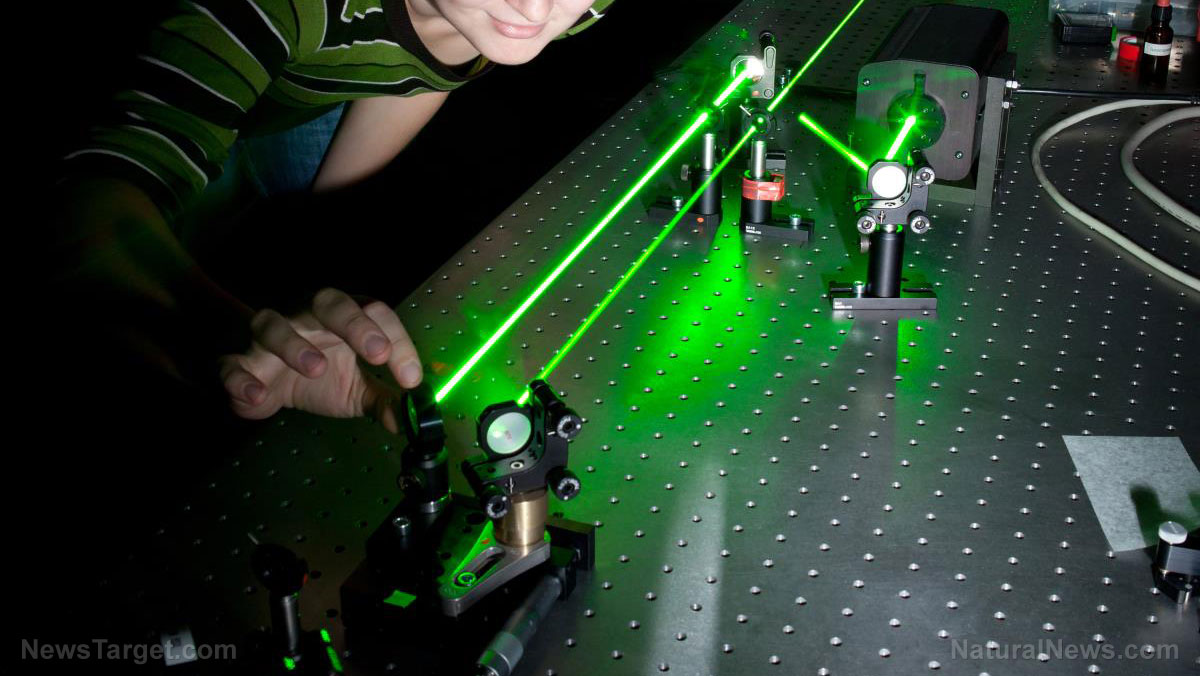“Important theoretical finding” shows how breaks in temporal symmetry result in molecules that can encode data from Weyl semimetals
11/26/2020 / By Virgilio Marin

A study published in Scientific Reports shows that breaks in temporal symmetry can produce molecules in materials called Weyl semimetals that can encode data. Researchers from Brazil and Iceland said that the theoretical finding can contribute to the development of quantum computing and spintronics – an emerging technology that uses electron spin instead of electron charge for faster, more efficient devices.
What are Weyl semimetals?
Weyl semimetals can be thought of as three-dimensional versions of graphene, an atom-thick honeycomb sheet of carbon with a two-dimensional structure. They host a massless, quasi-relativistic, chiral kind of particles called Weyl fermions.
These particles are quasi-relativistic because they move similarly to photons and behave as if they were contracting space and dilating time. Meanwhile, the term “chiral” applies to a molecule that cannot be superimposed onto its mirror image. For instance, a person’s right and left hands are chiral but a sphere is not. In Weyl fermions, chirality makes them behave like magnetic monopoles, which are the magnetic version of a charged particle, such as an electron.
Weyl fermions were first proposed in 1929 by German physicist Hermann Weyl (1885-1955) as possible building blocks of other subatomic particles and as a possible solution to Dirac’s equation. Formulated by British theoretical physicist Paul Dirac (1902-1984), this equation combines principles of special relativity and quantum mechanics to describe the behavior of electrons, quarks and other quantum particles.
Weyl fermions are hypothetical entities that had never been observed until three different 2015 studies showed that they manifest themselves as quasi-particles – collective excitations of electrons – in certain solids. In two of the studies, the particles were observed in tantalum arsenide, which is now categorized as a Weyl semimetal.
Producing data-storing molecules in Weyl semimetals
In the present study, the researchers were able to find a way to produce molecules made up of widely separated atoms in Weyl semimetals that can be used to encode information.
“These molecules wouldn’t be viable outside the Weyl context because the distance between atoms prevents them from forming covalent bonds and hence from sharing electrons,” said lead author Antonio Carlos Seridonio of São Paulo State University in Brazil.
The researchers showed that Weyl fermions in Weyl semimetals appear as splits in Dirac fermions – any particles of the so-called Standard Model, with the possible exception of neutrinos. These splits occur at points called “Dirac nodes” where the conduction band – the space in which free electrons circulate – meets the valence band, the outermost layer of electrons in atoms.
“A break in symmetry makes this point, the Dirac node, split into a pair of Weyl nodes with opposite chiralities,” explained Seridonio. “In our study, we broke the time-reversal symmetry.”
Time reversal symmetry means that a system looks the same if the flow of time is reversed. But when this symmetry is broken, the breaks produce molecules with spin-up (spinning clockwise) and spin-down (spinning counterclockwise) electron clouds that are spatially different. In other molecular systems, spin-up electrons and spin-down electrons are evenly distributed in the electron cloud. (Related: New “smart” fabrics will allow you to wear your electronics.)
Seridonio said that this peculiarity in Weyl molecular systems can be used to encode data as the molecule can be associated with the binary system – the bit, or the basic unit of information in computing.
Breakthrough.news has more important advances in computing.
Sources include:
Submit a correction >>
Tagged Under:
breakthrough, computing, discoveries, electron spin, electronics, goodtech, quantum particles, research, spintronics, Weyl fermions, Weyl semimetals
This article may contain statements that reflect the opinion of the author
RECENT NEWS & ARTICLES
Physics.News is a fact-based public education website published by Physics News Features, LLC.
All content copyright © 2018 by Physics News Features, LLC.
Contact Us with Tips or Corrections
All trademarks, registered trademarks and servicemarks mentioned on this site are the property of their respective owners.





















